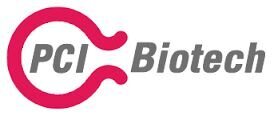scientific publications & Presentations
Recent scientific publications from PCI Biotech’s programmes.
| Programme | Publication | Brief Summary |
|---|---|---|
| The PCI Platform | Photochemical Internalization for Intracellular Drug Delivery. From Basic Mechanisms to Clinical Research. Jerjes W et al. J Clin Med. 2020 Feb 14;9(2):528 | The PCI technology has been shown to improve the biological activity of a number of macromolecules that do not readily penetrate the plasma membrane. PCI has also been found appealing for intracellular delivery of drugs incorporated into nanocarriers and for cancer vaccination. |
| The PCI Platform | Disulfonated tetraphenyl chlorin ( induced photochemical internalisation of bleomycin in patients with solid malignancies: A first in man phase I dose escalation clinical trial. Ahmed Sultan et al., Lancet Oncology 17 (2016),1217 1229 | In this clinical phase I study PCI Biotech's proprietary photosensitiser fimaporfin was given at escalating doses in combination with the cytotoxic drug bleomycin to 22 patients with advanced and recurrent cancer. The treatment was found safe and tolerable, and significant anti tumour effects were seen at all dose levels in this patient population with aggressive cutaneous and sub cutaneous tumours. |
| fimaVACC | Photochemical Internalization: Light Paves Way for New Cancer Chemotherapies and Vaccines. Šošić L et al., Cancers (Basel). 2020 Jan 9;12(1):165 | This report describe PCI as a potential tool for cellular internalisation of chemotherapeutic agents or antigens and provides a systematic review of the ongoing research. Preclinical studies suggest that PCI can effectively be used to deliver chemotherapeutic agents to the cytosol of tumor cells and, thereby, improve treatment efficacy. Likewise, PCI was pre clinically shown to mediate major histocompatibility complex (MHC) class I antigen presentation and generation of tumor specific cytotoxic CD8+ T lymphocytes (CTL) and cancer remission. |
| fimaVACC | Photochemical internalization enhanced vaccination is safe, and gives promising cellular immune responses to an HPV peptide-based vaccine in a phase I clinical study in healthy volunteers. Tone Otterhaug et al. Frontiers in Immunology (2020) | The article shows that intradermal vaccination with fimaVacc in combination with an immunological adjuvant is safe, and enhances cellular and humoral immune responses to peptide and protein based vaccination. |
| fimaVACC | Photochemical internalization of peptide antigens provides a novel strategy to realize therapeutic cancer vaccination. Markus Haug et al., Frontiers in Immunology 9 (2018) | This article shows that fimaVacc can strongly enhance vaccination effects also with peptide vaccines and with cancer antigens. The article also describes the mechanism of action for fimaVacc in such vaccination. |
| fimaVACC | Intradermal photosensitisation facilitates stimulation of MHC class Irestricted CD8 T cell responses of co administered antigen. Monika Håkerud et al., Journal of Controlled Release 174 (2014),143 150 | The fimaVACC technology represents a potent tool for delivery of antigens to cytosol for stimulation of cytotoxic CD8+ T cell responses after intradermal vaccination. |
| fimaNAC | Light induced gene expression using messenger RNA molecules. Sigurd Bøe et al., Oligonucleotides 20 (2010),1 6 | Study to developed a site specific delivery strategy for mRNA molecules through the use of fimaNAC . The main benefit of the strategy proposed is the possibility for protein production from the delivered mRNA in a way that is controllable in a time and site specific manner. |
Recent scientific presentations from PCI Biotech’s programmes.
fimaVACC
Poster presented at EMSO Immuno-Oncology, Geneva, Switzerland, December 2019:
PCI Biotech ESMO IO Poster Dec 2019
Presentations held at the World Vaccine Congress Europe, Barcelona, Spain, October 29, 2019:
PCI Biotech_WorldVaccineCongressEurope Oct 2019
fimaNAC
Poster presented at Int mRNA Health Conference, November 2021
PCI Biotech Poster Int mRNA Health Conference Nov 2021
Presentation held at RNA Therapeutics Virtual Conference, February 2021:
PCI Biotech SMi RNA Therapeutics Feb 2021 - PDF
